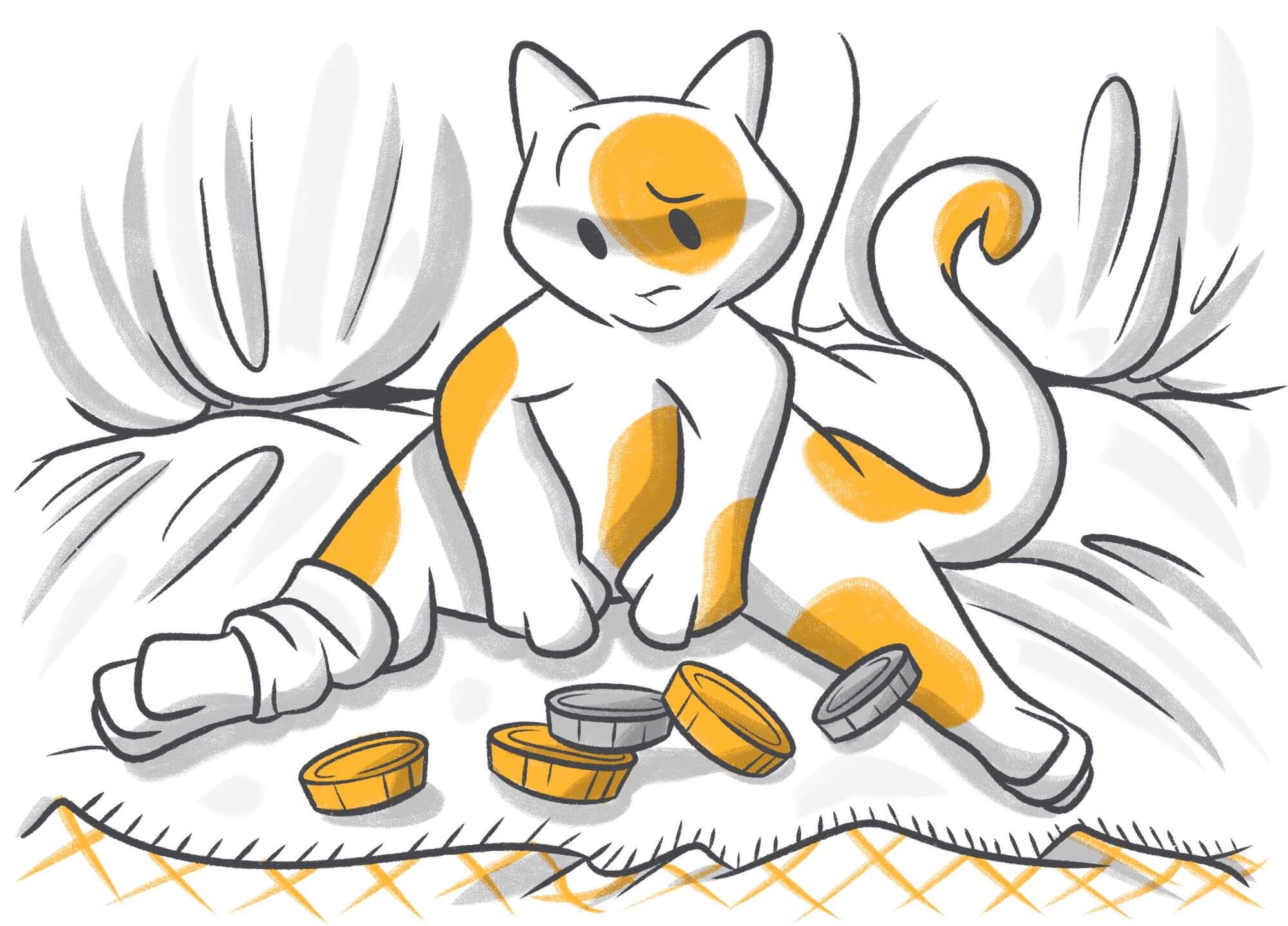Pet insurance is vital for both pet parents and the pets themselves, for a wide variety of reasons. The price often puts people off, but there are more affordable options out there than you’d think.
Let’s look at how much pet insurance REALLY cost in 2023.
Content:
- How Much Does Pet Insurance Cost
- What Affects the Price of Pet Insurance
- What Pet Owners Need to Know to Save Money
- FAQ
- Conclusion
How Much Does Pet Insurance Cost
There are several different types of pet healthcare coverage now, with traditional pet insurance plans standing next to a range of alternatives that usually offer a little more value for money. There are options available for less than $1 per day, but there are also policies that cost hundreds of dollars each month.
I looked for quotes to insure my 7-year-old intact, perfectly healthy cat from five different insurance providers. They ranged from $17.94 to $139.60 for similar policies with the same details.
The average price was $58.27.
What Affects the Price of Pet Insurance
Specific breeds, ages, health conditions, locations, and more will affect the price of pet insurance. Dogs usually cost more than cats, and older pets are more expensive to insure than their younger counterparts. Senior pets tend to experience more health problems, especially as they head towards the end of their lives.
Certain breeds of dogs and cats are more susceptible to a range of medical complaints, so you may find that insuring them will come with a slightly higher premium. Hip dysplasia commonly afflicts pugs, and larger breeds often experience heart issues, arthritis, and other weight-bearing conditions.
The level of coverage will alter the price significantly. Accident and illness insurance is more expensive than accident-only policies, and you’ll also pay more for additional services such as wellness plans for preventative treatments. Pre-existing conditions will come with much higher premiums if they’re covered at all.
What Pet Owners Need to Know to Save Money
To be a good pet owner, you’ll also need to be fiscally savvy. When it comes to pet insurance, you should spend time looking around to see every option available to you and your pet. Allow me to show you why.
With Trupanion, my seven-year-old cat (slash furry demon) would cost $139.60 per month, with a 90% reimbursement percentage on vet costs.
With Embrace Pet Insurance, on the other hand, the monthly premium is $40.27 per month with a $100 deductible and 80% reimbursement of bills up to $15,000.
There is a big difference between $40 and $140 per month. Shopping around a little will make vet bills and other pet costs much more affordable.
Discounts
Many pet insurance providers offer discounts for certain groups of people. Embrace, for example, offers discounts for military personnel and annual pay. Other providers offer discounts for other organizations and groups, multiple pets, and combining different insurances together (home, car, pet, phone, etc.).
Higher Deductibles
You can reduce the cost of your monthly premium by increasing the deductible. If you have a breed that isn’t prone to medical conditions, you could look at a lower coverage limit. This isn’t available from all pet insurance providers.
Stop Googling - Ask a Real Vet
Some vets will work with or associate with pet insurance companies. Signing up through your vet might come with a discount on insurance and additional extras. Alternatively, your vet will likely have suggestions as to which providers are good and/or bad.
Sign Up for a Full Coverage Plan with Extras
Although it might seem counterintuitive, paying more for a more comprehensive pet insurance plan could save you money in the long run. Additional packages on top of a basic policy can mean full or partial reimbursement for routine appointments such as spaying or neutering, microchipping, vaccinations, tick/flea/worm prevention treatments, and dental care. This will, obviously, save you money in the long run.
Start Insurance Young
Insuring an adult dog or cat is often more expensive than insuring a juvenile and faces yearly premium increases. Getting your pets insured as soon as you can, preferably while they’re still puppy or kitten age, will mean lower monthly premiums when they reach adulthood.
Maintain Good Habits
If you keep your pets fit and healthy, you won’t need to claim your insurance or pay the high costs of vet treatments. It’ll also reduce the risk of having to declare pre-existing conditions for later insurance signups.
Checkups for fit and healthy adult pets should take place every year. Senior dogs require twice-yearly checkups.
Make Use of All Preventative Treatments
Whether preventative and routine treatments are included in your insurance policy or not, you should always stick to your pet’s recommended vaccination schedule. Alongside that, flea, tick, and other parasite prevention treatments should be administered and added to your pet's care schedule.

Almost all insurance providers refuse to reimburse clients who have caused harm to their pets, whether by abuse or neglect. If your pet hasn’t been vaccinated in the recommended way and then develops one of those preventable diseases, the cost of care could fall on your shoulders.
FAQ
Is Pet Insurance for Senior Dogs Worth It?
If you don’t already have insurance for your senior dog, you may find it quite difficult to find a provider who will cover you. Elderly dogs tend to experience more health problems than younger dogs, and they will also have age-related issues.
For this reason, senior insurance policies are often much more expensive, restrictive, and (for some) not worth it. In such cases, alternatives like Petcube’s Emergency Fund are a good substitute for emergencies.
With this animal insurance, you can get 24/7 vet support anywhere and protect all your pets from emergencies for less than $1 per day. Subscribe now and receive compensation for the treatment of your dog or cat.
What is the Best Pet Insurance for Bulldogs?
If it’s in your budget, look for breed-specific insurance companies. They will have a greater understanding of the health concerns those breeds are likely to have and will usually offer policies that cover those conditions.
How Much Does Pet Insurance Cost for Dogs?
I know I’ve spoken a lot about pet insurance for cats in this article, so I feel it’s only right to look for insurance for a small dog with the same details: 7 years old, intact, female, and no underlying health issues. The average was £89.75 across five quotes.
Conclusion
Pet insurance might not seem important when your cat, dog, or other pet is young, bouncy, and full of youth. When they get older, however, or when they start moving out and about in the big, wide world, accidents and illnesses can occur. It’ll be when something bad happens that you kick yourself for not having signed on the dotted line sooner.
Was this article helpful?
Help us make our articles even better









